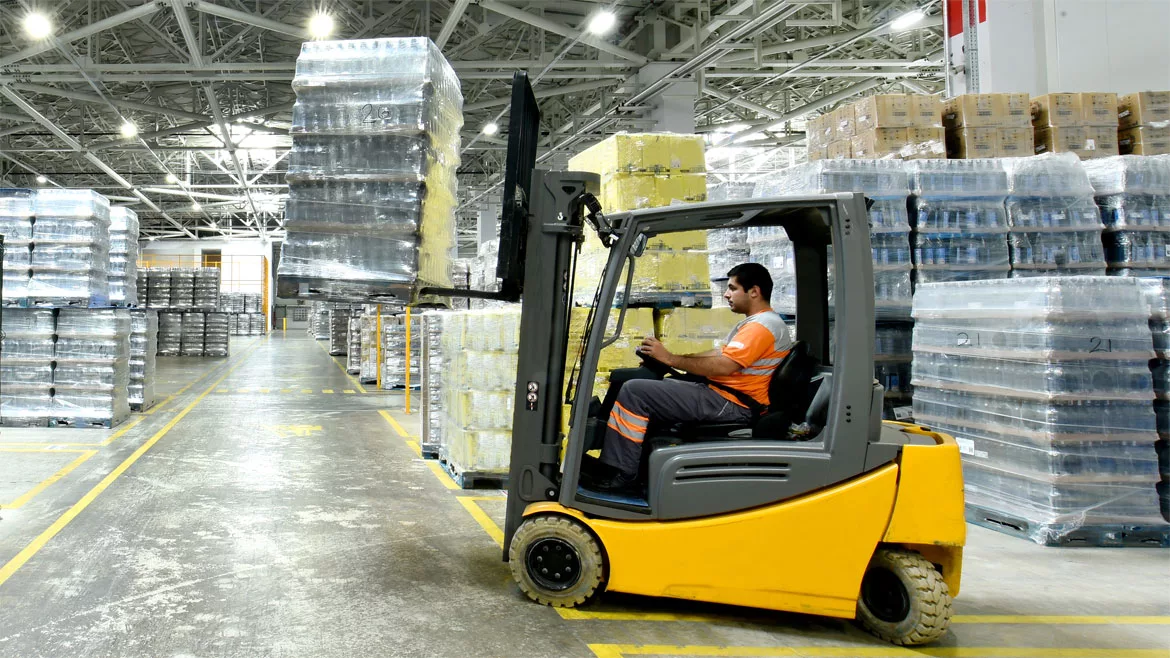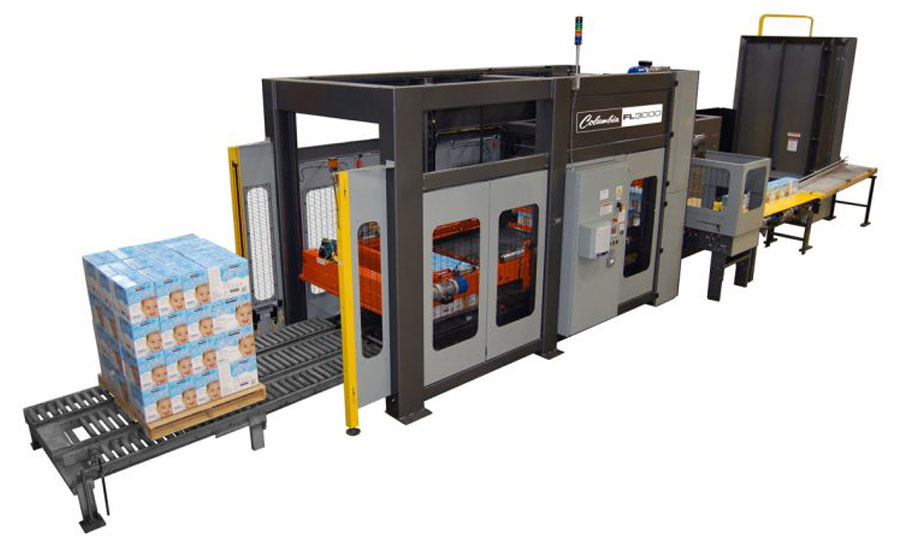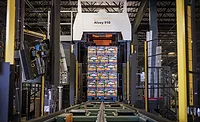Robotic palletizers, depalletizers enhance worker safety, increase efficiency
Craft beer, energy drinks driving need for automated palletizing operations

In the 1989 movie “Dead Poets Society” students at the all-male Welton Academy are surprised on the first day of classes by the new English teacher, John Keating (Robin Williams), as he encourages his students to “make your lives extraordinary,” a sentiment he summarizes with the Latin expression carpe diem, meaning “seize the day.” As the pandemic has had unforeseen impacts on the beverage industry, experts note that advanced palletizing systems have helped warehouse operations “seize the day” while bringing returns on investment (ROI).
“Depalletizing can be one of the toughest jobs within the warehouse, but thanks to the advancement of robotics and conventional palletizing, the role best played is to help alleviate human-prone injury and redundant movement,” says Keith Fisher, president of Honeywell Intelligrated, Mason, Ohio.
Robotic palletizers and depalletizers also have the ability to process pallets in any given sequence, which help increase efficiencies, Fisher notes.
“[Robotics] can aid in the processing of single ― and mixed-SKU pallets in any pattern or sequence, all without human supervision, thus enhancing worker safety and increasing their efficiency to focus on other tasks,” he explains.
Given the dynamics of the beverage industry, which constantly is evolving and introducing new products, machine flexibility is key for operations, notes Jason Enninga, regional sales manager at Brenton and Quest, Cincinnati.
“Being able to efficiently palletize those new SKUs [requires] packaging equipment that is flexible to easily changeover and handle different case sizes throughout a production run,” he explains. “In the long-term, packaging lines are only getting bigger and faster.”
Further, when it comes to adding automation through robotic palletizers, depalletizers and other related case-packing equipment, Enninga notes that the key is for those systems to integrate seamlessly into the existing processes of beverage operations.
“A well-designed robotic palletizing system integrated with AGVs can really bring a beverage manufacturer or distributor strong ROI in labor savings, speed and overall cost,” he says. “Customers really need to select a packaging equipment supplier that is going to be there long after the sale.
“The right supplier can help recommend and design new systems to complement existing processes when customers are ready to expand,” he continues. “The right supplier will also be there with customer support to minimize downtime. These are just a few of the things that customers need to consider when evaluating their long-term operation needs.”
The value of automation
As some beverage manufacturers and distributors ship hundreds of thousands of pallets a day, experts note that the adoption rate of automated palletizers and depallitizers is “very high.”
With the high production speed and weight of products being palletized, “there is just no way to hit those shipping goals through manual operation,” Brenton’s Enninga notes. “The beverage industry has always seen the value of automation in their end-of-line packaging process; this is something that is here to stay,” he says.
Honeywell’s Fisher notes that with ready-to-drink beverages growing in popularity, the industry is seeing an increasing demand to leverage conventional and automated systems.

Image courtesy of Columbia Machine Inc.
“These companies have unique packaging requirements that impact the machinery,” he explains. “[T]he combination of palletizing/depalletizing and software allow operators to select predefined patterns and update machine operation when case sizes change without having the burden of cumbersome off-line programming software.”
Moreover, with the increase of consumers engaging in eCommerce and omnichannel shopping, this translates to increased warehouse operations, “which ultimately is propelling the integration of automated processes including palletizing and depalletizing, Fisher says.
Ted Yeigh, regional sales and division marketing manager at Vancouver, Wash.-based Columbia Machine Inc., notes that during the past decade or so, the number of craft brewers adopting automation has grown significantly.
“That particular segment has been a little slower to adopt pal and depal automation as the volume for many doesn’t warrant it. But as they grow, the need for automation will too,” Yeigh says. “From discussions with several craft brewers, a conservative volume to be able to justify a case palletizer seems to be close to roughly 500,000 cases per year.”
Brenton’s Enninga adds that the popularity of energy drinks is having a “big impact” on palletizing and depalletizing equipment innovations. “It was not that long ago that most of these beverages were packaged in six-, 12- or 24-pack cases,” he says. “Today, a lot of that has changed.
“Not only do energy drink can sizes vary, but some are packaged in four-packs, others are packaged in larger case sizes. The energy drink market continues to grow, and retailers will likely be asking for different packaging sizes to meet market trends,” he continues. “This places the onus on packaging [original equipment manufacturers] OEMs to design their systems with flexibility to accommodate greater SKUs.”
Automation helps alleviate manual labor issues
Experts note that, as palletizing and depalletizing labor positions tend to be at risk for high turnover, automating these processes can help address some of the labor challenges beverage operations might face.
Palletizing and depalletizing positions within warehouses tend to be at risk because of the strain put on the employee from manual labor, Honeywell’s Fisher explains.
“Automating these processes can help alleviate some of the staffing strain hiring managers face when filling these roles and focus on human-led roles in other areas that see less repetitive behavior,” he says.
Brenton’s Enninga echoes similar sentiments, noting that picking cases, stacking and wrapping pallets is a very time-consuming, labor-intensive endeavor if done manually.
“Installing robotic palletizers replaces manual stacking, and those employees can now be reassigned to other areas of the company where they are needed more,” he explains. “That is why the beverage industry has traditionally been early adopters of end-of-line packaging automation. Automating end-of-line packaging operations is an ideal way to ease customers’ labor concerns.”
Because palletizers and depalletizers usually start out as a manual process, palletizers tend to come a little later in the process of automation, Columbia’s Yeigh notes.
“Production lines are generally automated starting at the front-of-end of the line, so depalletizers are often early in a beverage producer’s ‘automation journey,’” he explains.
Further, as labor challenges are affecting nearly all sectors of manufacturing, “it seems like the ROI or payback calculations for beverage producers have been altered somewhat in deference to the labor shortage,” Yeigh says. “Safety still has to be No. 1.”
New opportunities
As robotics and automation continue to advance, beverage operators need to stay on the cusp of the latest technologies and advancements, experts note.
“There are two items that come to mind and both are related to reducing downtime and improving [overall equipment effectiveness] [(OEE)], Yeigh says. “Predictive maintenance and enhanced machine and component status feedback are hot topics today with producers wanting to invest in solutions that will help to improve their efficiency.”
Honeywell’s Fisher notes that the future of the warehouse increasingly is leaning toward automation and eventually a fully automated, dark warehouse.
“The dark warehouse will enable companies to automate processes that were once impractical,” Fisher says. “Robotic palletizing and depalletizing are just one component playing into those advancements.”
Brenton’s Enninga notes that mixed product palletizing is one area that shows a lot of opportunity for beverage manufacturers and distributors.
“Many retailers are starting to ask beverage manufacturers for pallets stacked with multiple SKUs for efficiency purposes,” Enninga says. ”Packaging technologies are currently being developed to handle mixed product palletizing, which will further help the industry as a whole streamline their operations to more efficiently meet customer market demands.”
Looking for a reprint of this article?
From high-res PDFs to custom plaques, order your copy today!





